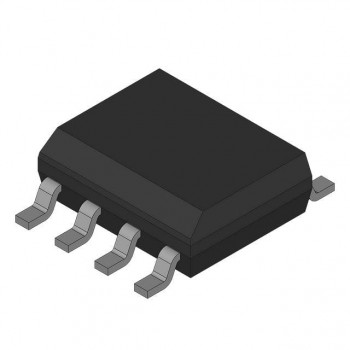Microcontrollers are the backbone of modern electronics, powering a wide array of devices we use daily. Among the various classifications, two prominent categories are 8-bit and 32-bit microcontrollers, each with distinct capabilities and applications. Understanding their disparities is crucial for selecting the right microcontroller for a particular project.

Evolution and Basics
At their core, the difference between 8-bit and 32-bit microcontrollers lies in their processing power and architecture. An 8-bit microcontroller utilizes a CPU that can process 8 bits of data at a time, while a 32-bit microcontroller processes data in 32-bit chunks. This variation impacts various aspects of their performance, functionality, and application.
Processing Power and Performance
One of the most significant disparities between these microcontrollers is their processing power. Due to its wider data path, a 32-bit microcontroller offers superior performance compared to an 8-bit one. The 32-bit architecture allows for faster data processing, enabling more complex computations and quicker response times, which is advantageous in applications demanding high-speed operations.
Memory and Addressability
Another crucial difference is in memory capabilities. While both types support different memory sizes, 32-bit microcontrollers typically have larger addressable memory spaces than their 8-bit counterparts. This expanded memory allows for handling larger programs and data sets, making them more suitable for applications requiring extensive memory resources.
Peripherals and Features
The 32-bit microcontrollers often come with more built-in peripherals and features compared to 8-bit ones. These additional features include advanced communication interfaces, increased analog-to-digital converter (ADC) resolution, and enhanced timer modules. This makes 32-bit microcontrollers more versatile and capable of handling a wider range of tasks without additional external components.
Power Consumption and Cost
Despite their higher performance and expanded capabilities, 32-bit microcontrollers may consume more power compared to 8-bit ones, especially when running at full capacity. Additionally, 32-bit microcontrollers often come at a higher cost due to their advanced features and larger memory sizes. Selecting the appropriate microcontroller involves balancing performance requirements with power consumption and cost considerations.
Application Areas
Both types of microcontrollers find applications across various industries. 8-bit microcontrollers are commonly used in simple embedded systems, such as household appliances, basic control systems, and smaller-scale projects where cost and power efficiency are critical. On the other hand, 32-bit microcontrollers excel in more sophisticated applications like industrial automation, automotive systems, high-performance computing, and advanced IoT devices.
Conclusion
In summary, the choice between 8-bit and 32-bit microcontrollers depends on the specific requirements of the project. While 8-bit microcontrollers are cost-effective and power-efficient for simpler applications, 32-bit microcontrollers offer superior performance and capabilities suitable for complex and high-performance systems. Understanding their differences empowers engineers and developers to make informed decisions when selecting the appropriate microcontroller for their projects.

